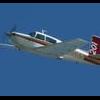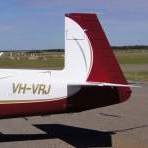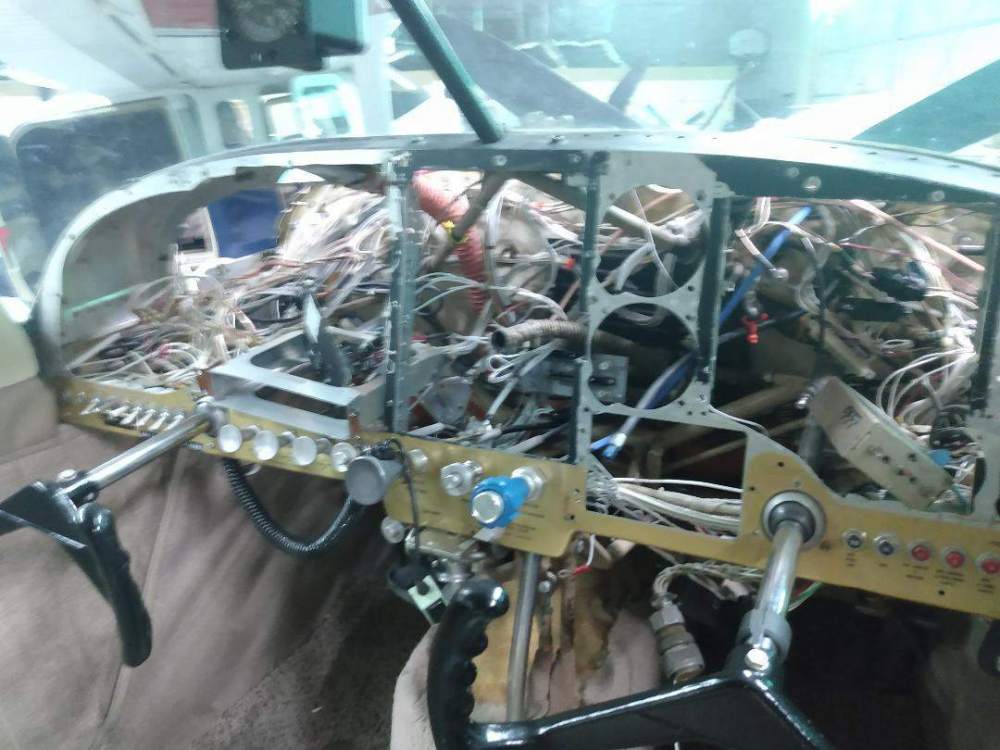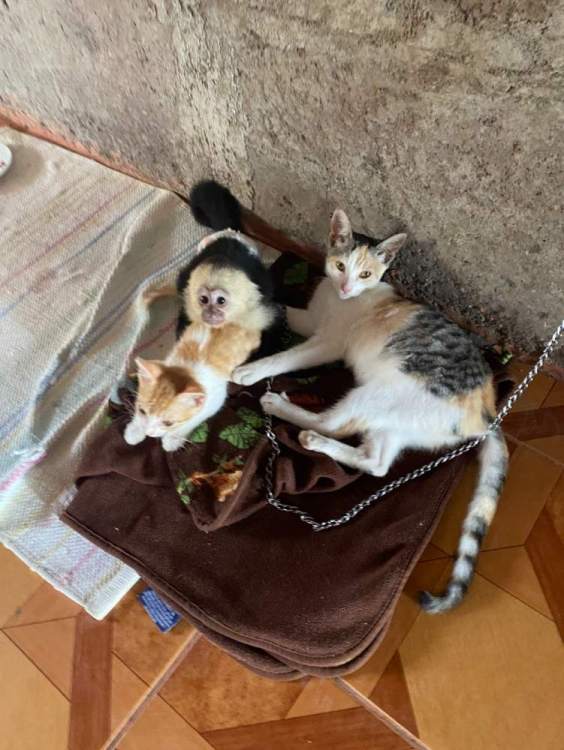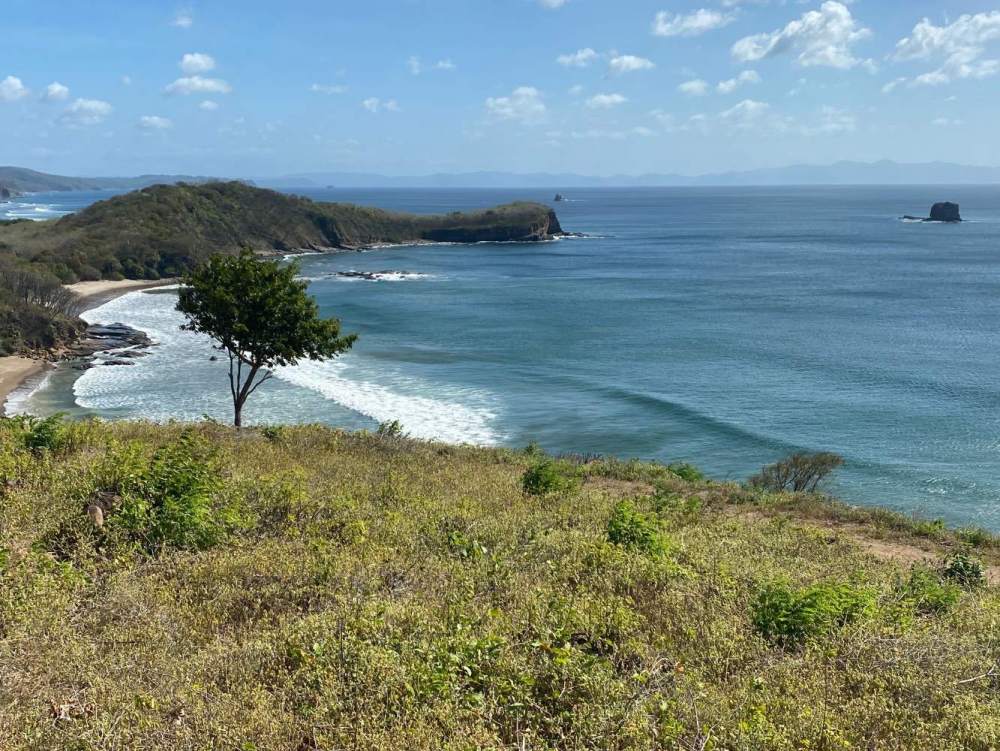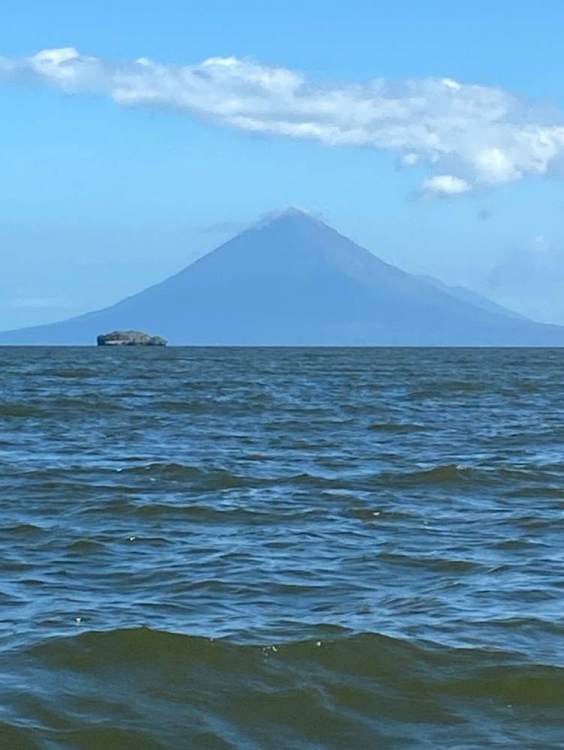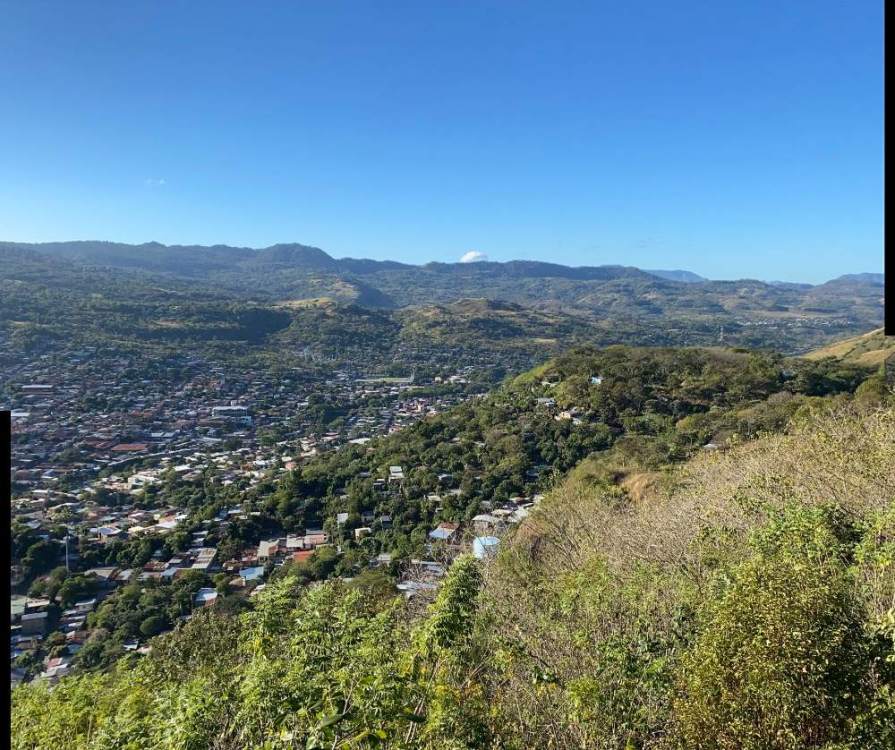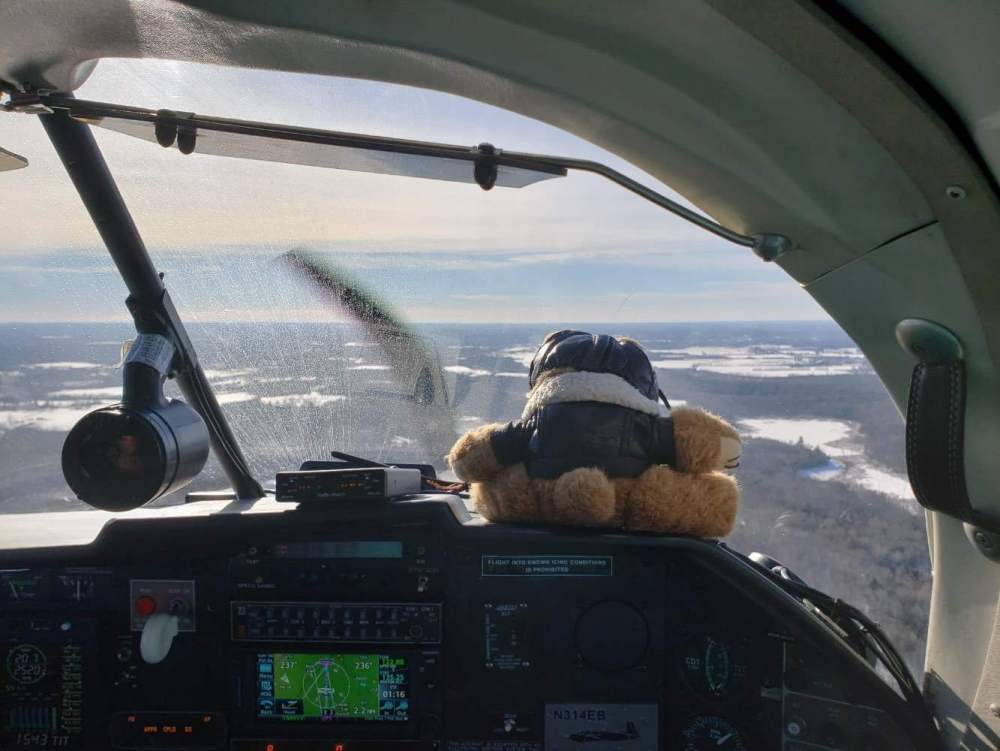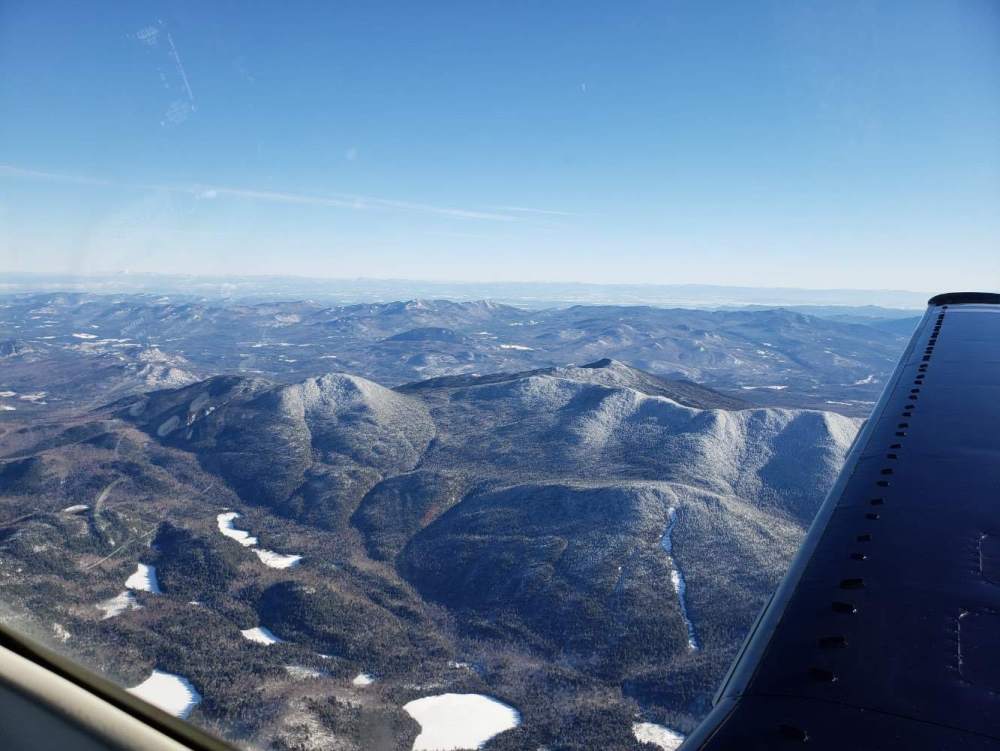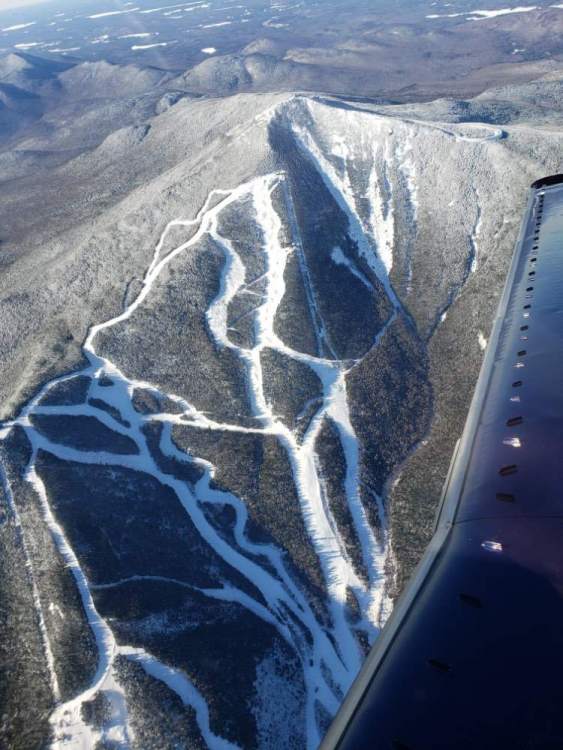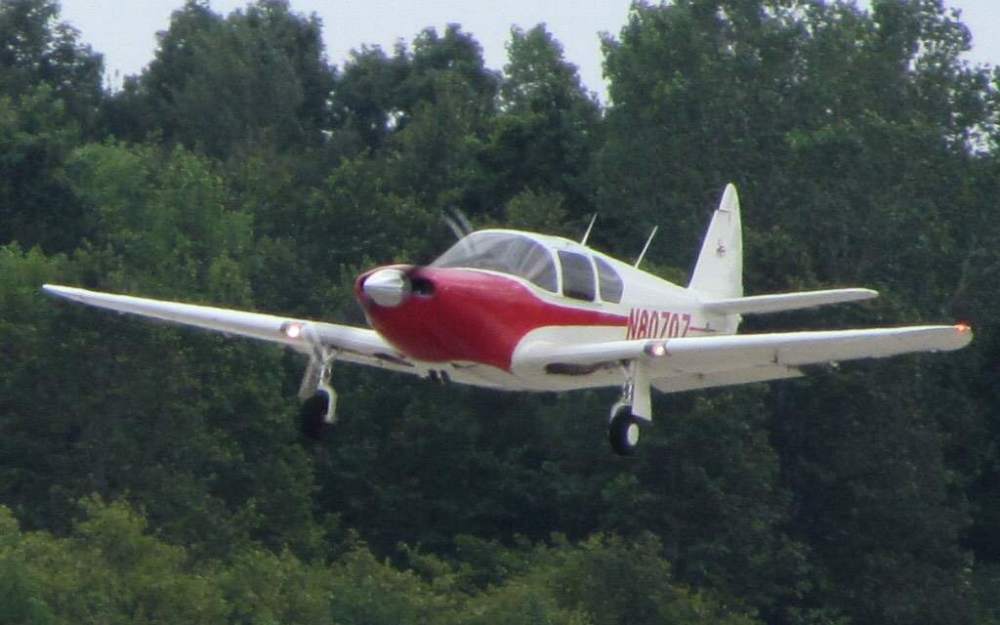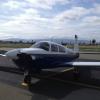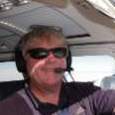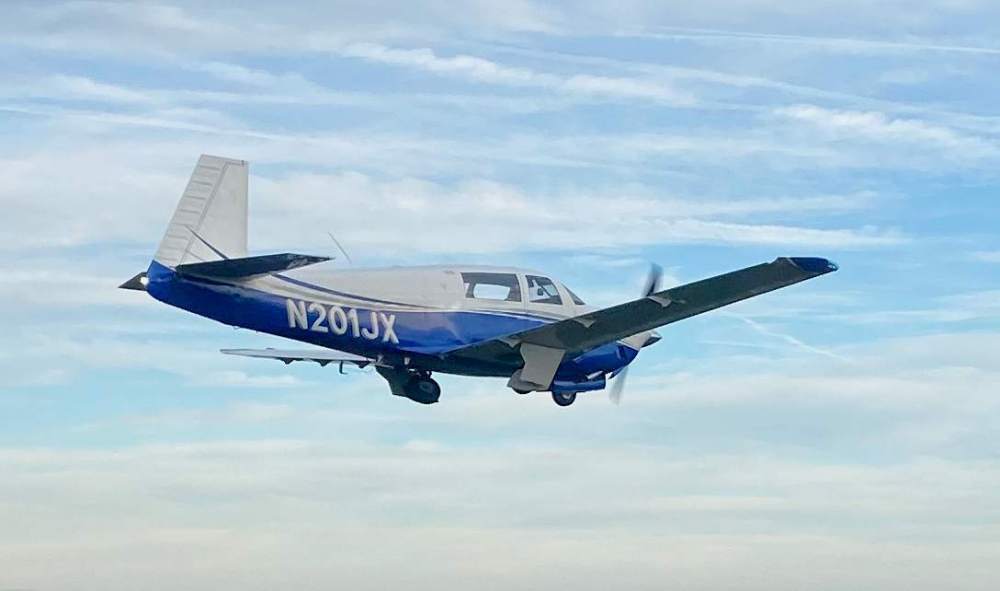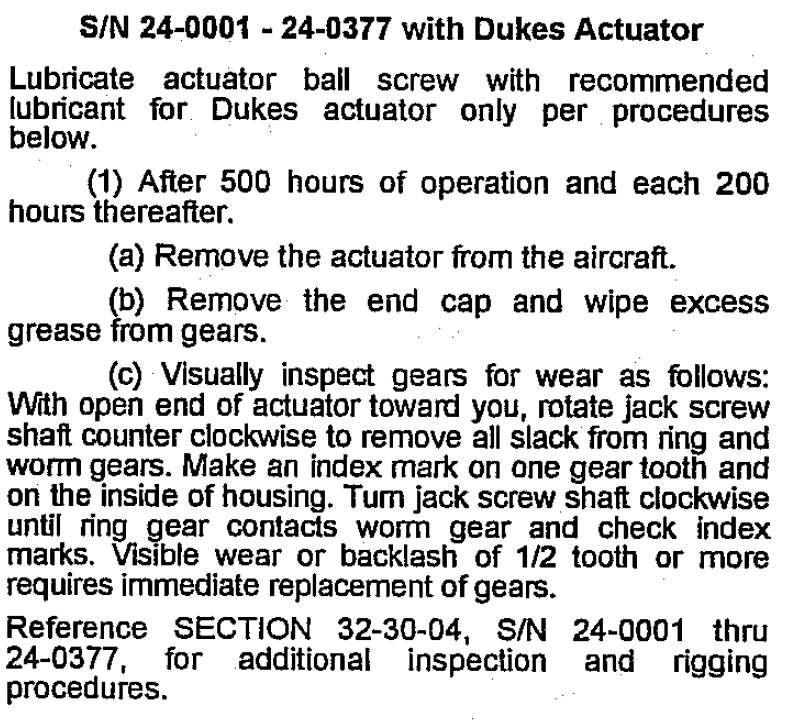Leaderboard
Popular Content
Showing content with the highest reputation on 01/09/2022 in all areas
-
Yesterday I flew round trip from Ohio State KOSU to Elkhart Indiana KEKM Both are towered airports. I was dropping a friend off to pickup a car that was repaired after he hit a deer on the way to Chicago. It was a really cold morning, about 14 degrees but the visibility was 35 miles, about as good as it ever gets around here. The flight there was totally uneventful, I dropped my passenger, spent 15 minutes or so on the ground and started a still warm airplane for the trip back. Not long after take off I heard a beeping sound, it was coming from the phone charger, it apparently warns you below 12 volts. One other time a few months back I had negative amps on my jpi on a short trip, but never had that problem again. I was an hour from home on a beautiful day with either a bad alternator or a bad regulator. My concerns was the radio and the gear. My options were attempt to complete the trip, cancel my IFR flight plan and head VFR to Delaware Ohio KDLZ an uncontrolled field 15 miles north of Columbus. Or land as soon as “practicable”. I knew the airplane would fly without the battery so I decided to head to KOSU, and monitor how quickly my battery was losing volts. I also decided I would inform ATC once I was closer to home. The thought process for this one was crazy. If something went really wrong I didn’t want the postmortem discussion to be “ how many suitable airports I passed on my way home” insane but that’s what I thought. I really didn’t think I was in danger of having a major problem outside of communication. I shut off all extra electrical equipment that I didn’t need, the second radio, as well as all lights and the autopilot. I had also considering canceling IFR at that time and shutting off the avionics master and turning back on when closer to home. I also considered turning off the master because unplugging something and plugging it back in seems to fix 90% of the things that don’t work in my world, but I was scared to do that as I’ve never turned off a master in flight. I started watching the volts very closely on the jpi and was loosing .1 volts every 23 mins, I knew this rate may speed up so I decided no matter where I was I was dropping the gear at 11 volts. When I was about 35 miles fro Ohio State on with Columbus approach I requested the phone number for the OSU tower in case I lost comm because I was having an alternator issue. They asked “ if I’d like to declare an emergency” I responded not at this time, the plane and I are fine it’s only precautionary in case I lose my radio. They replied “ stand by” returned a minute later and said they “we’re declaring an emergency for me” Really? I didn’t want to bother anybody and thought having the phone number for the tower as well as them informed of my possible situation I’d be able to call them through my headset and land with cellular communication. ATC also offered me an airport 4 miles away and I declined again saying I was fine and this was precautionary. I was cleared to land about 13 miles out they were not allowing another plane to do a practice ILS and holding traffic from departing for longer than normal. I could hear them refer to the “emergency aircraft” during the rest of my flight. I landed uneventfully with 11.5 volts left on the battery, and only after I landed did I notice fire EMS and other flashing lights by the FBO. Did I do everything correctly? I’m on the ground unharmed, the plane is undamaged, and I was never scared or worried. I will be purchasing a handheld, and was wondering do I need to fill out paperwork or inform the FAA? Love the community and thought I’d share my story. By the way, recommendations on handhelds? Lawrence6 points
-
We really need to talk about this and the OP's experience with an MSC. In my experience as a Mooney community member we loudly broadcast the benefits of MSC's, while quietly overlooking and complaining about the problems. AFAIK, MSC's all got their designation decades ago. The title "MSC" can be handed down generationally or sold to an entirely new business. There is no ongoing training requirement for mechanics at MSC - maybe the original mechanics might have received training from the Mooney company, but it is unclear to me if the new mecahnics who have started working at these places over the last 40 years have any specialized training. There's no requirement they have Mooney specific tooling or use Mooney-checklists for annuals or other repairs. We have encountered MSC's that did not have the special tool required to change on an M20K Rocket or the gear pre-load tool required for every annual. It is not clear that they have any better access to Mooney parts or factory support, but maybe they do, at least for what's left of the factory. I am unaware of any factory quality-control mechanism or way an Mooney could lose its MSC designation for malfeasance, let alone for poor quality or decreasing knowledge of Mooneys. I guess it seems to me that MSC's have the same variation in quality as all other mechanics. Some are great, some are terrible. Having MSC's seems to be great for our brand... but with enough of these stories, having MSCs is both harmful for the brand and GA generally as Mooneys get an undeserved reputation of being hard and expensive to maintain. Compare this to the Cirrus Service Center system - Mooneys will never be Cirrus, we serve a different price point and most of our owners would be appalled at the Cirrus service pricing. But you go to any Cirrus Service Center, and they are following the same procedures, they have centralized records on your aircraft, you can expect the same quality of work, and the Cirrus factory carefully polices their quality, training, and methods in order for them to maintain that designation - the network bands together to ensure seamless 24/7 nationwide support and special AOG support no matter where you need service. Its more than just parachutes that sells those planes. For all the blame going on here there is absolutely no excuse for a mechanic, especially one who has done half an annual as part of a prebuy, not checking for corrosion. Corrosion is like the #1 thing you should be looking for on the pre-buy. And anyone who has more than a passing knowledge of Mooneys knows that spar corrosion is a significant issue. Did they provide a pre-buy report? It should say "inspected for corrosion!" We've noticed recently more and more planes are not getting a pre-buy report, which surprises me. I have no solution to propose. Pilots repeatedly reject publicly reviewing mechanics, they don't want to burn relationships or hurt a small business with a bad review - let alone a designated member of the Mooney community - so its hard to find someone actually both naming and criticizing bad MSCs. I have to wonder if one day we will have some sort of alternative credentialing body to help owners that are mechanical-novices from finding credible maintenance. (Not to self promote, but y'all know I am not a disinterested party in this because my husband @jetdriven started as small maintenance business, RPM. He does have a gear pre-load tool, the tool require to change the oil on an M20K Rocket, and uses the Mooney checklist for annuals and 100 hrs.)5 points
-
That's what you get for forgetting to retract the gear and/or flaps after takeoff. Don't worry, it can happen to anyone.5 points
-
I consider myself someone that get informed before doing something. But also I assume people do what they are supposed to do. For me a prebuy should inspect for major issues so to protect the buyer from getting burnt. Actually I don't care for a prebuy to tell me that fuel caps are not placard with the fuel quantity, how much it could be to fix that? I'd rather expect them to tell me anything major with the airframe, avionics or power plant. I get that one thing is to suppose and another thing is what's written. But let's assume another scenario, following your logic, you should become a surgeon before undergoing surgery so you can tell the surgeon all the things he should take care of so you don't die while the surgery.5 points
-
4 points
-
Yeah, that's correct. In case of Texas, you have 6.25% sales tax, which you are exempt if the transaction is done between "occasional" salers, meaning, people who do not do this for a living. In order to go down this road, the seller needs to sign a paper declaring that he is not in the buisness of selling airplanes. This has been already resolved, and now I have the paper to present in the state of Texas for the exemption, so I don't have to pay the 6.25% tax here. Maybe this will help cover some of the corrosion repairs!4 points
-
@redbaron1982 Sorry to break the bad news. Technically, once you start the annual inspection, the aircraft is no longer airworthy until an IA signs off as AW. This is the reason why Savvy suggest not to structure PPI as an annual. Now, a bit a better news. A list of discrepancies or AW issues should not be recorded in the log book. IA at the MSC should simply sign off in the log book indicating annual inspection has been completed in accordance FARAIM... and found aircraft to be un-airworthy. A list of AW should be given to you in a separate sheet. At this point, you can find another A&P to review and address the AW issues. You can either have the A&P address all the issues, or at the A&P's discretion, he can assist you in obtaining a ferry permit assuming if the aircraft can be safely flown to a repair facility of your choice. Mike Busch cover this exact topic in one of his webinar. Search YouTube for his video.4 points
-
4 points
-
4 points
-
When I approached my current mechanic I told him that I heard he was reluctant to work on Mooneys but I was hoping he would make an exception. He said “I have nothing against Mooneys. It’s the owners that drive me crazy!”4 points
-
How about the huge myth that Mooney owners are C.B.s? Oh, wait....4 points
-
After due deliberation, sacrifices of smoke and chickens :-) and blowing into a didgeridoo for hours I settled on a Dynon package. Everything Let me say that again- EVERYTHING gets pulled and dumped except the MX-11 comm I am admittedly gambling on the autopilot certification this year. They have a basic package that does exactly what I need for a VFR only set up easily expandable to full IFR with only the installation of a say- G 430WAAS Their package includes an HDX 10" screen, a new ADSB OUT transponder, a new Comm radio and the necessary D-10 standby display (only required because of the STC) I added ADSB IN for display on the HDX, along with the EMS system for display on the HDX A new PS PMA6000b audio panel will go in and I kept the MX-11 comm for a last ditch comm radio in case of catastrophic failure in the HDX. All the parts for about $20K A/P parts will be about 2K more when available (labor extra) What would a similar Big G package go for? :-) There's a Bonanza in the hangar with me waiting on a full Big G package for $55,000 with a many months wait for parts. The left panel will have the HDX the D-10, the ign switch, both gear lights and the data in USB plug and nothing more (Before anyone jumps in and says that the HDX shows gear lights - YES I know that and it will be hooked up BUT for commonality to the previous habit patterns set up with the original lights I am keeping them in to prevent any issues with breaking the habit patterns in this airplane with such an important task. The next guy can remove them if he wants but I want them right in front of my eyes, maybe I've just been doing this stuff too long but I've seen things happen in my 60 yrs of flying). The right side is empty except for a power USB plug for the wife's iFlyGPS tablet The center stack only has the PMA6000b and the MX-11 NO ROUND DIALS AT ALL IN THE PANEL and only 2 screens to look at. HDX and D-10 I looked at Aspens (I looked at them when they first came out decades ago), AV30s, the Garmin round glass and figured they were all half way measures, if I was going to go glass - go all the way. Its a paradigm shift in panel layout and technology for the entire panel information transfer from airplane/engine to pilot brain. I just don't see where keeping SOME mechanical gages intermixed with new glass technology accomplishes anything substantial, 19th century with 21st century? Reminds me now of my last big iron - the all glass Airbus Also replacing Master switch, fuel pump switch and the radio master switch as they get the most use every flight. The old red C/Bs are gone too. This suffices for me as I do not do IFR any more (single engine). The next owner can add the 430 if they want that capability. The internals on the HDX do everything I want for VFR flight. I have flown coast to coast several times VFR and I have the time to stop if necessary to do it that way. My radio shop is at KVGT They are a long time avionics and 145 repair station at KVGT and they have filed to become an authorized Dynon installation facility using my airplane and one of their own as their qualifiers. So far so good. This saga will continue3 points
-
You made a decision, had a plan, executed it, and both you and the airplane are safe. Sounds like a great outcome to me.3 points
-
I don't want to continue looking into the past, but reading to this article, some take aways: 1) "First, the pre-buy examination* must be done by a shop or mechanic with extensive expertise with the specifi c aircraft make and model involved. Since the mechanic will have only a limited amount of time to examine the aircraft, it’s essential that he know exactly where to look for problems—i.e., what this model’s most common and serious problems are." "Ideally, the pre-buy should be done at a factory-authorized service center or type-specifi c specialty shop." I chose a MSC, officially published in mooney.com. I think I did the right call here. 2) "Second, the shop or mechanic chosen to perform the pre-buy must have no prior history maintaining the aircraft and no prior relationship with the seller or (if applicable) the seller’s broker" Again, the MSC I selected had no previous history with the airplane, the broker or the seller. 3) "Third, the pre-buy needs to be done within a reasonable distance of where the aircraft is located." It was a 40 minutes fly from the home airport of the aircraft. 4) "Once the pre-buy shop has been chosen, the next order of business is providing specifi c guidance to the mechanic on the desired scope and detail of the examination" This one I didn't do. 5) "While there are a lot of variables, we generally figure a pre-buy examination should require roughly:" "Eight hours of labor for a retractable or advancedtechnology normally aspirated piston single like a Bonanza or Cirrus" I paid for 17 hours, more than twice the 8 hours suggested in this article. 6) Takeaways, apart froom the ones mentioned above: "The pre-buy and any ferrying expenses should be paid for solely by the buyer. Never agree to have the buyer and seller split the costs of the pre-buy, because in that case the seller will want to control the location and scope of the pre-buy" "Never structure a pre-buy as an “inspection”—particularly not as an “annual inspection.” "Once you’ve bought the aircraft, it sometimes makes sense to convert the pre-buy into an annual inspection." I've done all of that. So again, having read that article, would have changed much what I've done. Ok, I give it that I may have listed to the shop the list of things I wanted them to take care of (actually I did that, but where basic things that I looked my self when I went to see the airplane). Or maybe I'd have asked for a detailed list of activities to be performed, and if something big was missing, I may have asked them to include it. The document says "A prebuy should be target to find showstoppers", I paid a official MSC 17 hours of labor, I would have expected them to do that. I know, people don't do what they are supposed to do, it happens to me every day, my own team, my internal clients and suppliers, they don't do what they are supposed to do, many times. So I take that, I should have had everything on written, I should have treat the MSC as if they were doing the first pre buy of their life and were completely new in the buisness. The thing is, that I was the "new" here, trying to buy my first airplane.3 points
-
Jimmy Garrison https://www.gmaxamericanaircraft.com Sent from my iPhone using Tapatalk3 points
-
I put together a video showing a recent flight into San Jose, Costa Rica. Unfortunately my camera got very dirty and the quality is not as great and the camera in the tail stopped working... But still I believe I was able to put something together that is nice. I have some more footage from the flight. I hope to put some additional videos together over the next weeks. The countryside in Costa Rica is simply magnificient. So here we go...2 points
-
So I know it’s been forever and a day since I’ve posted a video, well 288 days to be exact. But here is part 1 of how I change my oil. I’ve been out of flying since July of 21’ because of a runaway 172 that hit my plane. But this is the first of some videos I’ve had to post. I will be starting a series on the crash, dealing with the insurance company and hopefully someday the F’ing repair of N201NU. Hope you enjoy part 1 and part 2 will be dropping Thursday. Sent from my iPhone using Tapatalk2 points
-
I have had this happen under similar circumstances. I spoke with the controller on the phone for a while after landing, and iirc he explained that declaring an emergency on behalf of the pilot allows the controller to focus on that one aircraft and potentially access more resources as needed. He said that it required some paperwork on his end, but that it required nothing from me after an uneventful landing.2 points
-
Want to predict how this is going to end for the now infamous YouTuber? It isn’t going away unnoticed… This is BrYan’s comic response… Best regards, -a-2 points
-
here is a 570-hour, 2006 engine with gray paint over the crush washer on the oil sump screen. Which means its never been removed in 16 years. Perhaps a third of the airplanes we get here the first time, we see this. The prebuy-annual was done by a "respected MSC shop" near the seller's home airport. Reviewing the logbooks, the seller had this same shop do his prebuy/annual three years prior. Neither log entry mentions the mooney factory checklist. Or removing this sump screen. The aileron center link was banging into the retract truss, there's a Mooney kit for that. Sparks coming off the starter relay because the nuts were loose. A couple oval belly panels were driven in so tight, they had deformed the belly skin, and had to be drilled out to be removed. The panel hadnt been removed in years, the spar is behind those panels. The buyer, my client, mentioned the shop said they couldnt drill those screws without the previous owner's permission, but it was OK.2 points
-
I'd like to see a separate thread on checking for corrosion on a 30-50 year old Mooney. We all know about SB208. But what about the wings? Is there a written procedure? Anything that suggests which cover plates to remove and where to look; where are the hot spots? I do the best I can and so does my mechanic but I haven't seen a lot of examples of Mooney corrosion. I'd actually like to take my aircraft to a "MSC" to have a dedicated focused condition inspection outside of an annual. The work product would be nothing but a report with recommendations as to where to focus maintenance. [BTW, if you get a termite inspection on a 50 year old house that you're planning to buy, are you 100% sure there is no termite damage? Are you even 50% sure? It's perhaps easier on a M20 but it's still a hard problem without a lot of time and money.]2 points
-
That is a Globe GC-1B Swift made by Temco with a 210 hp mod from the original 125 hp. Perhaps when @201er says it has been done before he means that Roy Lopresti, of Mooney M20J development fame, later developed the Fury based upon the GC-1B "In the late 1980s, the Swift enjoyed a kind of revival when the Lopresti Fury appeared. Originally designed by Roy Lopresti when working at the Lopresti Piper Aircraft Engineering Company, the aeroplane was closely based on the Globe Swift. The Fury was powered by a 200hp Lycoming IO-360-A1B6 engine, and had a maximum speed of 222mph. Lopresti secured the rights to the aircraft when the company went into bankruptcy. There were then hopes that the aircraft, which had drawn a lot of attention, would be put back into production with Aviat, powered by a 180hp engine, but nothing seems to have come of it." https://en.wikipedia.org/wiki/LoPresti_Fury https://www.planeandpilotmag.com/article/remembering-the-lopresti-fury/ https://www.aircraft.com/aircraft/39749579/n80707-1946-swift-gc-1b https://en.wikipedia.org/wiki/Globe_GC-1_Swift2 points
-
2 points
-
The generator will not be connected to the battery bus during starting. The circuit breaker contactor in the generator regulator disconnects it from the bus until it is producing more voltage than the battery. This doesn’t happen until the engine is running. The armature of the generator is a short to ground if it isn’t spinning and producing power. This contactor is not necessary with an alternator. The diodes isolate the stator from the battery until it is making power.2 points
-
The future of GA seems to be in Experimental Aircraft and LSAs (unless you have really deep pockets). Folks that want to get out from under the costs and processes associated with certified aircraft build. Vans has sold as many RVs as Mooney has built M20s. The owner builders become the experts. If you want a modern hands off experience, you can write a $1M+ check (instead of a $100K check) and buy a new(er) airplane. I just think we have to be realistic as to what to expect from a 30-50 year old airplane or the mechanic that's doing the best he can to balance the cost and liability of keeping old airplanes flying instead of grounding them. The more involved you get, the more you'll know, and the better off you'll be.2 points
-
With all due respect to some of the previous posters, I think brokers typically add zero value to a transaction and take a cut of the pie. Just shop for yourself. If you use a broker ask what he will do - does he have access to comps that will help you bargain a lower price? Will he advise your on what must have equipment you should have in your plane for its mission? How knowledgeable is he about Mooney’s - can he do a basic log book review and walk around and identify likely deficiencies and give you good advice about whether to make an offer and for how much? Will he travel nationwide to get his eyes on a plane before you waste your time looking? Or is just some guy at the airport who will shop around controller and trade a plane for you in exchange for 3% of the purchase price? Because if it’s just the latter you can do that yourself…. as other posters have said spell out what you want and your budget (which are hopefully aligned). Start looking. Plan a long search, most of us aren’t so lucky to find what we want the first time we browse. Budget for a few pre buys so you are mentally and fiscally prepared to walk away from a plane you thought you would buy if things go sideways. A failed pre buy is the best money you’ve ever spent in aviation because walking away with only a pre buy bill is so much cheaper than buying a basket case. We actually bought our plane from Jimmy when he was at AAA, but that wasn’t so much a broker relationship - he has an inventory of Mooney’s and we considered his as well as private sales in other states etc. Turns out he had the plane we liked and he was pleasure to deal with. He has teamed up with Don Maxwell now who’s a senior statesman of Mooney Mechanics, which is also great, and I think hopefully what they are selling out of their partnership will be mechanically sound due to Don’s finishing touches. That said, I have heard a few people having Maxwell do the prebuy of a plane Jimmy is selling - since it’s now the same business I would advise against making that choice, no matter how upstanding both of them are (and they are), there’s just too much built in conflict of interest in that situation, and if you buy from them, I would still seek an independent pre buy, lots of other knowledgeable Mooney mechanics in Texas to use…2 points
-
2 points
-
There is nothing in the maintenance manuals that says "inspect every inch of the spar, and all stringers, longerons, and skins for corrosion". If there were, that inspection alone would probably take 50 hours. So you are relying somewhat on the experience of the shop, and much more on chance, to find something serious like corrosion. Most of that 17 hour budget would be consumed by checking the paperwork, the engine, and the avionics & landing gear. There would be very little for what are termed "special inspections". Corrosion inspections are detailed & specialized, and there are no checklists for most planes. So it's hard to fault the seller, and it's even harder to fault the shop given that they would not have had adequate time to review every nut, bolt, rivet, and crevice. The best you can do is look for a reasonable repair cost, and ask the seller to contribute. Maybe he cooperates, but don't expect it. As others have mentioned, a thorough pre-buy would be so expensive that no one would do it. The reality is that you are buying a 40 year old machine that doesn't owe anyone anything. There is always risk in that, and that's why the price of an older plane is not the same as a brand new one. I figure that if I buy a 40 year old Mooney for $100K, I am $550K below the cost of a new one.2 points
-
great info guys, i am hoping my installer can help me understand what we need to do. I do not see much conversations or discussions on ILS, VOR approach procedures with these avionics. What a great resource we have here on web/mooneyspace. Still learning and working through this. Hopefully the info can help others as well in the future trying understand the issue. Any info i get i will post. thanks everyone. Garmin Pilot ops could not answer this question but they are not an "install" information resource.2 points
-
The reversed brake pad has happened to me also. In my case they felt OK but I noticed a scraping sound while taxiing.2 points
-
We always hope for better than we have, but common sense says we always live in the reality. People believing otherwise think that just by writing a check to someone that they will always have your best interests in mind. It's actually gone the other direction in our lifetime. There was a time where you could have gone with that philosophy and it may have turned out ok, and in some cases a person may surprise you and do just that even now. They are definitely out there. Some of them are on this forum. However we wouldn't be three pages into this post if everyone lived by that philosophy. There is no standard for a pre-purchase inspection. It's not in the FARs. It's not even an inspection really according to the FAA's use of that word. It's a "Look and see" basically. Therefore since everyone seems to do it to a different standard, if you are going to pay your money for one make sure it's done to your standard. Should someone have told him that? Yes. But there are threads on here describing what we are talking about here. What needs to change overall is accepting accountability and holding people you hire accountable. If I hire you then I better tell you what I want you to do for my money or it's at least partially my fault if I didn't get my money's worth. I hate to state the obvious but the biggest problem isn't that they missed it, although that is very unfortunate. The biggest issue looking forward is that issue needs to be remedied. You've got to pull yourself together and collect your thoughts and figure out a plan of action moving forward. To me, leaving it there is not a remote option. As far as I can tell I'm still the only one in this post who has given him the contact info for someone that can help him out of this mess. It's a carbon copy of what happened about three years ago and it turned out just fine. But the person took swift decisive action and got it to a shop while it was still "in annual" that he could work with. Should the shop have caught the corrosion? For sure. But I definitely wouldn't have the shop that didn't catch it do the work on it. I would try to get my money back for the pre-buy. But that's a battle you can work out later. If it was my airplane it would be on Flight Aware on the way to a shop that has worked with a DER before to get this type of thing remedied. The fact that the shop happens to be in the home state of the buyer is a huge plus. (swta.net)2 points
-
I am really sorry for the OP's experience... I would be pretty mad myself if this was to happen to me... In fact, It easily could have happened to me on my first mooney purchase. During the PPI, they found some internal damage from a gear collapse inside the wing. It required two complete wing panels to be removed and replaced and it cost the seller about 35,000.00 to fix. That was about 1/5th the price of the aircraft. I shudder thinking that it could have been missed. On my second Mooney purchase, I bought the aircraft from a MSC that had bought the aircraft for the aircraft to resell. They had done a lot of work to it including a new propeller and re doing the instrument panel. I had a PPI done elsewhere due to potential conflict of interest. On that PPI they missed the fact that the MSC had not installed a switch for the prop heat. After the sale, while digging into that issue, we found that the MSC had also put the wrong propeller on the aircraft. The only thing different with this "wrong propeller" was that the anti ice heated boots were for a 24v system while the aircraft has a 12v system, so the prop was not getting sufficient heat. The shop that did the pre-buy and annual on that aircraft also missed that the Gear warning horn was non functional... That is straight up on the official Mooney annual punch list and they flat out didn't check it on the gear swing. I like a few others here have been thoroughly unimpressed with the average quality of mechanics for GA. Even at the MSC's I have been to. I had my most recent annual done at a new shop... I hope they did a good job, But I don't know how I would know. The place is not near home base so I was unable to spectate. What I do know is that when I took them the aircraft for the annual, I also gave them a pretty long list of squawks to address.... SHUT UP AND TAKE MY MONEY..... Yet they did not address a single one of them... It was work/money for the taking. That doesn't exactly inspire confidence in the thoroughness of the annual. What urks me is that the FAA prohibits me from doing so much work that I am perfectly capable of doing. These older aircraft should be more like experimental aircraft... I do my own work on my experimental glider, including engine work. Heck a few months ago I had the flaps and ailerons off of it as well. I get it though... some idiot out there would be using wood screws to hold down flappy sheet metal so that means we all have to suffer.2 points
-
I realize not everyone can do it, but at this point in life, I would be reluctant to buy anything but a Mooney because I know the airplanes fairly well. I also wouldn't buy an airplane without being intimately involved in the pre-buy inspection which would likely be more extensive and thorough than a typical annual if the owner would allow it. I'm not a mechanic (just an engineer with an opinion that "knows enough to be dangerous") but I honestly don't believe a thorough annual or pre-buy can be conducted for the hours typically allowed (unless you're an experts expert that works like a hummingbird). I spent 10 days on my last annual because I had the time and the time was well spent. Annuals aren't one shot events either like pre-buys; smart planned phased maintenance occurs in rolling waves over many years of ownership. I don't think it's realistic to expect that things can't be missed during a pre-buy on a 30+ year old airplane regardless of the shops level of expertise (unless you write a blank check and they have lots of time). Buying a new old airplane is a gamble. I hope we can see some pictures of this corrosion where we can all learn from it.2 points
-
So that this exact issue doesn’t happen. I’m the one paying them. If they wanted to they could spend 50 hours looking at every screw and light bulb and keep the tab going. On any pre-buy I have ever had done I have done my research and provide them , in writing, with exactly what i want looked at and then I ask them “What else should we be looking for? What have I forgot to mention?”. I have never had any push-back doing it that way and I think they appreciate having someone that has taken the time to isolate areas of importance rather than just taking shots in the dark. Pre-buys should be done to prevent multiple-thousand dollar gotchas rather than piddly things. The MAPA magazine used to have articles on the various models and what to look for. They were very helpful. Here is an example of one: M20K PRE-BUY.pdf I also tell them that I would like to buy some hours of their time. Some shops that just charge a flat rate for a pre-buy I don’t choose to use if they aren’t flexible. If after an hour we find a deal-breaker I don’t want to go further. Since I give them the list in order of importance to me, there have been times when part way through the list after we have looked through the expensive things I tell them that I’m satisfied and we don’t go any further. They get paid their shop rate plus time that they spend researching anything. But I have always tried to carefully comb through the logs and keep a running list of what was done and when it was done to get an overall picture of how the airplane has been maintained, well before I would consider spending money on a pre-buy. On this situation with the spar cap I would get good pictures and send them to JD Casteel at Southwest Texas Aviation (swat.net). He has been through this before and knows the process very well. Your airplane is still in annual until the last day of February. They have given you their opinion. Settle up with them after explaining that the pre-buy money should have caught that and you would be satisfied with a refund. Ask them to close it up and get it back to Texas after you talk to JD.2 points
-
I don’t have the GI 275 STC installation manual, but in reading the description of the CDI key for the GTN it’s likely that your installation is correct. I would consult with the installer before changing it.2 points
-
I had the same issue with our 1977 M20J and the Dukes 1057 actuator. It is very easy to shatter those old brush holders due to the epoxy on the caps. So folks are not pulling the brushes for inspection and they will eventually wear away completely, causing this: Luckily I was able to crank the gear down and land OK. After a LOT of research I was able to track down the original brush holder and brush manufacturers and had new engineering drawings created for these parts. There are minimum order quantities and so I went ahead and ordered to get N201JX back in the air. Kind of expensive but...... For 1977 M20J owners with serial numbers below 377, this may be interesting. The brushes, bearings, and wire necessary for the rebuild are all "standard parts" and would require no PMA or STC. The brush holders and caps are another story, for me personally they were "owner produced parts" and a "minor modification" (e.g. the method of safetying the brush caps). However, to have some of these parts available for others will require consultation with my local FAA MIDO. The threaded caps can be sealed on with tank sealant as others have suggested, but safety wiring the caps may be a better idea. That is still in work, as I said below. With the safety wire it will be very easy to inspect the brushes as an added part of the normal 200 hour inspection called out in the Mooney M20J Service Manual 5-20-06, Section 3, paragraph L: I would add: Inspect the gear actuator motor by removing the brush caps from the brush holders, remove and inspect the brushes. If the brushes are worn to a length of .25" or less (33% of original), replace the brushes. Now, that .25" (33%) is subject to review, I was balancing remaining wear versus spring tension in suggesting the criterion. Comments and suggestions welcome. Inspection and servicing of the gear motor bearings and commutator for the gear motor is not specifically addressed in the SM, but this level of work is outlined regarding the starter motor. So it should be doable by any A&P. LASAR used to send their Dukes gear motors to George's Electric in Sacramento for rebuild but he is closed down. Our 40:1 Dukes gears are still in great shape (proper maintenance, yay!) but replacing the unit with the $8500+ ITT actuator (if you can get it) versus rebuilding the electric motor and setting it up for continued easy inspection and service is kind of a no brainer.2 points
-
1 point
-
They may have had their own reasons for doing so, like needing a live exercise or getting some sort of management or deployment credit for activating the ground crew. It certainly doesn't hurt you as a pilot when they do that, and if it helps them or benefits them in any way, personally I'm fine with it.1 point
-
A little envious here. I'll save my pix until someone starts a "show us your butt-ugly engine compartment" thread . My 53 year old doghouse is not an aesthetic masterpiece.1 point
-
I haven’t had any success with the marvel mystery oil ring flush procedure, but I have had mixed results or limited results with using the paint can of Berrymans B12 chem tool. That stuff simply runs out the quick drain into the oil bucket with the rest of the oil. Gets disposed with it too. Other than that yeah, perhaps pull the jug and hone it. And I think they used to put bon-ami into the cylinder and run it thinking that would break the cylinder glaze.1 point
-
My first question is who did the prior Annual? (Sorry if someone already asked this, I didn't see it skimming through the messages.) I'd be very curious why they missed the corrosion?! Was the maintenance differed? It seem very strange to me that the corrosion got so bad that it's grounding the plane now and no prior annual made note that corrosion was starting and needed to be watched. Also surprised there was nothing done to try and slow or stop the corrosion. I'd want to talk to the IA that signed off the last couple of annuals to confirm if the prior owner was aware of the issue. There is always the possibility that they did NOT know. It would be a shame if the shop they trusted really didn't do a full inspection and it got to this point. So as far as the sale goes, the prior owner would not be in the mix if they had no clue. That leaves the IA for the prior annuals and the shop that did the Pre-Buy to explain why you're finding out about this now.1 point
-
@LANCECASPER I have to echo @corn_flake's sentiments on this. Your post was a well reasoned one for someone FAMILIAR with the intricacies of airplane ownership, but expecting, practically demanding, that all buyers must have that level of experience to purchase an aircraft is one of the reasons why GA is declining. Consumers have become used to a much higher level of expectation with automobile purchases; GA is stuck in the mentality of 1920s car ownership! Defending that 'old school' model is exacerbating the death of GA. Look no further than how Cirrus entered, and now dominates, the market for an example of how to grow GA.1 point
-
Routine prolonged use of foam plugs also can cause ear wax impaction problems, which affect hearing and are a huge nuisance. People become more prone to this issue as they get older, when their protective wax can become less moist and more solid and mixed with dry skin debris. I never had an issue when I was flying for a couple hours occasionally, but then I got older and the problem reared its ugly head last summer on a long trip with daily flying for a week. Attempts to clear the impaction with q tips or any other instrumentation can make matters much worse, including leading to serious infections in the ear canal skin that are very painful can spread to the surrounding bone. Anyone who has ever had an excruciating otitis externa is willing to do anything to avoid that happening again. Bony ear canal skin is the thinnest and most delicate in the body - there is no soft tissue cushioning under it - it's just a thin epithelial layer applied directly to the hard bone, and so any pressure easily damages that skin and compromises its critical barrier function. The deep insertion of a foam plug needed to provide good sound attenuation can be quite abrasive to the skin if not done carefully, and even then the plug still compresses the loose layer of protective wax and can strip it upon removal. Compacting the wax and pushing it further into the canal also disrupts the natural, gradual self-cleaning wax flow to the outside of the ear and can cause it to build up to the point of obstruction - which is a miserable experience if you've had it. I just switched from Clarity Alofts I used for the last 8 years to Bose A20s. ANR's objectively superior attenuation of the piston single cockpit noise profile relative to foam plugs matches my subjective experience with the A20s. An added benefit is that I don't have to crank the volume nearly as much to hear ATC clearly - together I hope these features will help slow the sadly inevitable progression of my hearing loss and tinnitus. Causing less ear canal problems is an added bonus, and so the benefits outweigh the increase in discomfort related weight and clamping pressure in my opinion.1 point
-
Where does the money go? I’m sure Instructors’ travel expenses are reimbursed, their rooms and meals are paid for. Classrooms need to be rented, teaching materials covered. The MAPA Safety Foundation does at least one scholarship per year. People focus way too much on cost rather than value. If after all of these years it wasn’t worth it for enough people, I think we’d know by now. Very simple, if you don’t see the value don’t sign up. If you have very talented people volunteering their time and enough pilots signing up throughout the year it seems like a great resource for Mooney pilots. I’m sold. I’ve never been to one, but I just convinced myself to sign up for Lakeland. When I was in a partnership in a Malibu Mirage and later a Meridian, if I wanted insurance I had to take annual training, at at least three times the cost of what MAPA is offering it for, and even 20 years ago I felt it was worth more than I paid. Say whatever you want about insurance companies, but one thing for sure, they have the numbers to go by. They wouldn’t give discounts for annual training if it wasn’t in their best interest. If all Mooney pilots took annual training it seems likely that we would all be paying less.1 point
-
Oscar, I have not flown to Jamaica so unfamiliar with those paperwork requirements. I do know that you will need an overflight permit from Cuba. Because US does not have banking relations with Cuba you need a company who can arrange payment. I would try Jim Parker at Caribbean Flying Adventures. His website is Caribbeanflyingadventures.com Jim can help you with all the Jamaican paperwork also.1 point
-
1 point
-
Hmm. I have not started a specific thread on engine-out ops, but I did post a detailed account of my incident here on this forum... titled "09/30 N5779R Engine Failure at 12,500'." But it may be a good topic for general discussion elsewhere I1 point
-
With an engine monitor I think you actually get better information doing a run up with a lean mixture than with a rich one - just don’t freak out when the RPM drop is higher than expected.1 point
-
If the reweigh is done in a shop or business "reviewed" by the FAA every year you can bet that the scales are certified as accurate every year just like their torque wrenches are every year. I know for a fact that my D model fuel tanks hold EXACTLY 26 gallons from dry empty. Not a tenth more will go in. A W&B report "should" use the unusable fuel and arm listed on the TCDS (or follow on STC). That all being said when I reweighed many years ago (my first on this Mooney) we found a 90 pound error on the first W&B done by the factory!!! It was in their math! Just because the factory did it doesn't mean it was correct Decades of 337s just compounded on that error What's the old saying? Trust but Verify?1 point
-
Interesting viewpoint. I found the amount of unusable fuel for my Mooney without doing anything more difficult than downloading the TCDS and reading the right section.1 point


